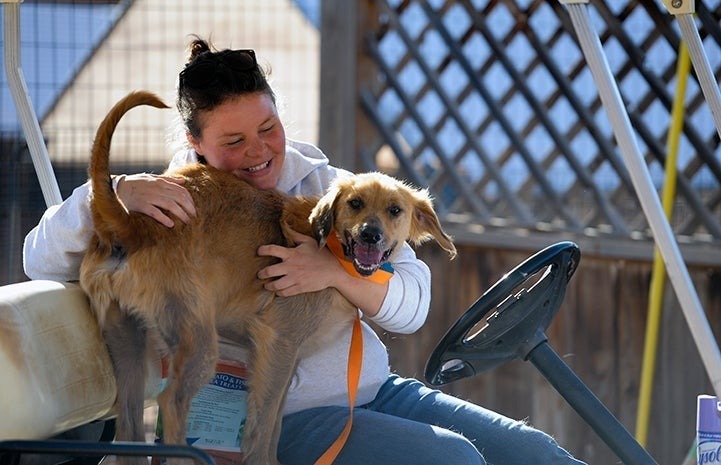Starting an animal rescue is a meaningful way to make a lasting impact on the lives of animals in need. Whether you’re looking to help stray pets, support wildlife rehabilitation, or foster rescued animals until they find forever homes, this guide outlines everything you need to successfully start an animal rescue and build it into a thriving nonprofit organization.
From legal paperwork to community outreach, here are six essential steps to help you bring your mission to life.
1. Research Local Needs and Regulations
Before launching your animal rescue, it’s important to understand the needs of your community and the legal landscape. Ask yourself:
-
Is there a high demand for animal rescue services in your area?
-
Are local shelters at capacity?
-
Are specific species or breeds underserved?
Once you’ve assessed the need, research local, county, and state regulations. While there are no federal laws exclusively governing animal rescues, most states impose licensing, recordkeeping, and health-related requirements. These may include:
-
Required vaccinations and spay/neuter policies
-
Adoption and intake procedures
-
Zoning regulations
-
Facility inspections
-
Limits on the number of animals per location
Document all requirements, as compliance is essential for sustainability and public trust.

2. Write Your Animal Rescue Mission Statement
A mission statement is more than just words—it’s the guiding principle behind every decision you make. A well-crafted mission statement should briefly address:
-
Why your rescue exists
-
What types of animals you serve
-
How you help animals and communities
-
Where your services are available
Keep it clear, concise, and purpose-driven. This statement will be central to your grant applications, marketing, and volunteer recruitment efforts.

3. Build a Strong Board of Directors
A dedicated board of directors is crucial for nonprofit success. Board members oversee governance, help with strategic planning, and often assist with fundraising.
Your board should typically include:
-
Chairperson (President)
-
Vice Chairperson (Vice President)
-
Secretary
-
Treasurer
Look for individuals with a blend of passion for animal welfare and professional skills, such as legal, financial, or marketing experience. If your local network is limited, consider reaching out to professionals in neighboring cities or statewide organizations. Virtual meetings make remote participation easy and effective.

4. Draft Nonprofit Bylaws
Bylaws define how your animal rescue will operate. They set expectations, create consistency, and ensure legal compliance. Your bylaws should outline:
-
Board member roles and elections
-
Meeting schedules and voting procedures
-
Conflict of interest policies
-
Compensation guidelines
-
Financial oversight
Some states require specific language in bylaws, especially regarding audits or public disclosures, so be sure to consult local regulations. Even if not required, having solid bylaws provides a professional framework to guide your nonprofit.

5. Incorporate and Register Your Rescue
To start an animal rescue legally, you’ll need to incorporate it as a nonprofit entity. Follow these steps:
-
Choose a Name: Confirm that your desired name is unique and not in use. Register it with your state’s business division.
-
File Articles of Incorporation: This document formally establishes your nonprofit’s legal status. It includes your organization’s name, mission, and structure.
-
Get an EIN (Employer Identification Number): Apply with the IRS to receive your nonprofit’s EIN, which acts as a tax ID and allows you to open bank accounts and apply for tax-exempt status.
6. Apply for 501(c)(3) Tax-Exempt Status
Once incorporated, you’ll need to apply for federal tax exemption. This designation allows your animal rescue to:
-
Accept tax-deductible donations
-
Apply for grants
-
Qualify for certain postal and tax exemptions
-
Establish credibility with donors and the public
Use IRS Form 1023 or the shorter 1023-EZ (if eligible) and pay the required application fee. Once approved, maintain your status by filing IRS Form 990 each year.

Success Tips for Growing Your Animal Rescue
Getting started is just the beginning. Here are some essential strategies to ensure your animal rescue grows and thrives:
Pursue Your Passion with Purpose
Rescuing animals can be challenging. Ensure you’re motivated by compassion and a genuine desire to improve animal welfare. Passion will sustain you through obstacles and long hours.
Recruit and Train Volunteers
Volunteers are key to your organization’s operations. Recruit locally through community events, social media, and partnerships with schools or clubs. Clearly communicate roles such as:
-
Animal care
-
Facility maintenance
-
Fundraising assistance
-
Administrative tasks
Provide proper training to ensure a safe and efficient environment for animals and people alike.
Launch a Fundraising Strategy
Fundraising fuels your mission. Create a mix of campaigns including:
-
Donation drives
-
Online crowdfunding
-
Grant applications
-
Merchandise sales
-
Benefit events
Make giving easy by accepting multiple forms of payment, including credit cards and digital wallets.
Start Small and Scale Smart
It may be tempting to take in every animal, but resources can be limited. Consider specializing in certain breeds, species, or situations (e.g., senior pets or wildlife rehabilitation). Collaboration with other rescues can also help distribute the load.

Hire When Necessary
As your rescue grows, you may need part-time or full-time help. Consider hiring for roles like:
-
Animal care technician
-
Volunteer coordinator
-
Fundraising manager
-
Outreach specialist
Professional support can enhance your operations and free up time for strategic planning.
Promote Your Organization
Awareness is essential. Use digital and traditional marketing tools to reach adopters, volunteers, and donors:
-
Build a website optimized for local SEO
-
Set up social media accounts
-
Send email newsletters
-
Share rescue stories and updates
-
Advertise in local newspapers or online directories
Participate in community events, sponsor local programs, or partner with pet-related businesses to gain visibility.

Use GoFundMe Pro to Support Your Mission
To maximize your fundraising potential, consider platforms like GoFundMe Pro. It offers:
-
Peer-to-peer fundraising
-
Integrated donation tools
-
Recurring giving options
-
Virtual and in-person event support
-
Comprehensive donor management
GoFundMe Pro simplifies the giving process, helping you raise more while focusing on what matters most—rescuing and caring for animals.
Final Thoughts
When you start an animal rescue, you’re not just creating a nonprofit—you’re creating hope for countless animals. By following these six steps and staying committed to your mission, you’ll be well-equipped to make a difference. From legal setup to community outreach, every detail matters.
And remember, you’re not alone. Many tools, resources, and passionate supporters are ready to help you succeed in building a rescue that truly changes lives—one paw at a time.















Leave a Reply